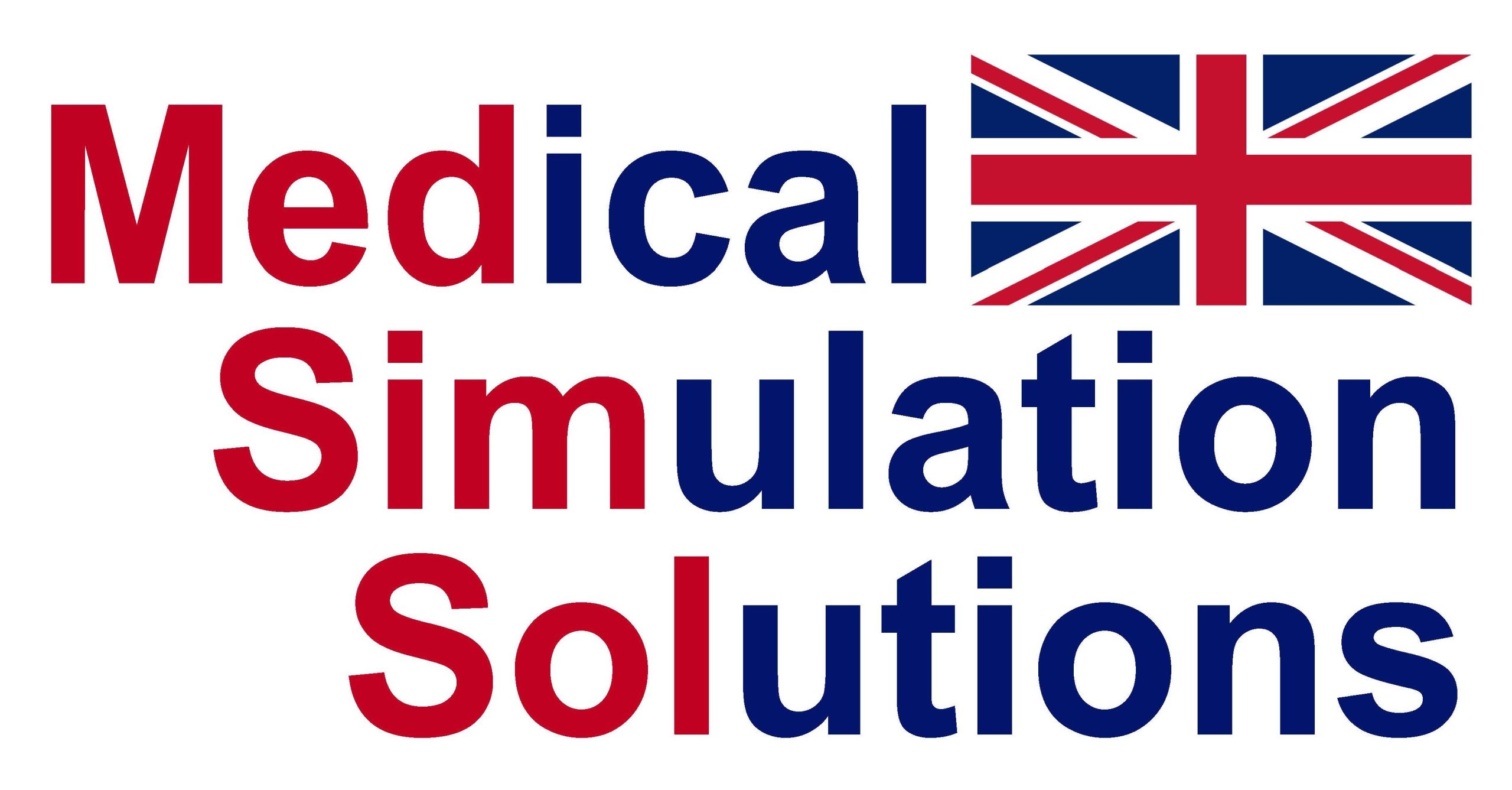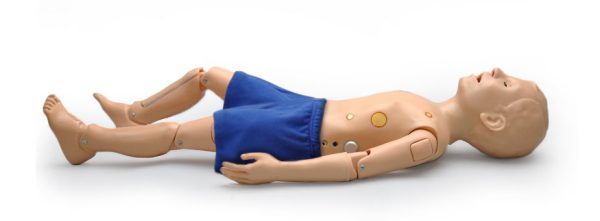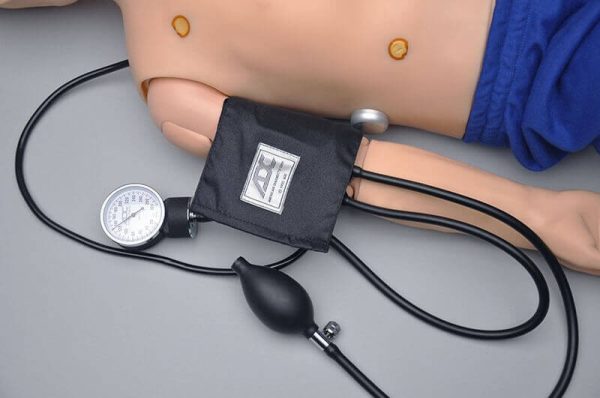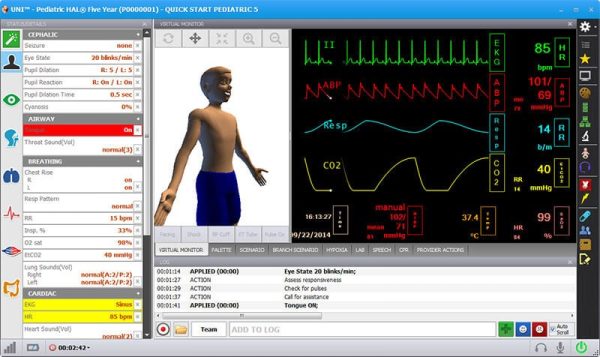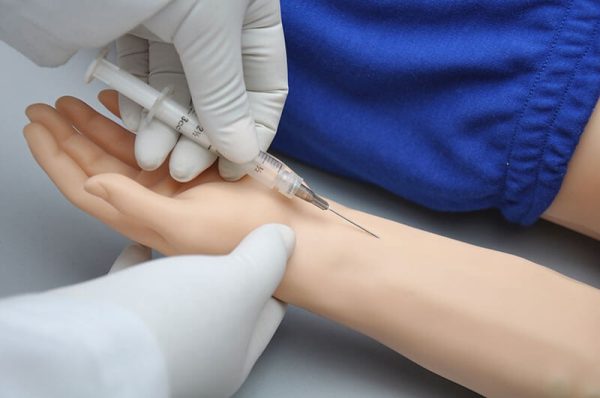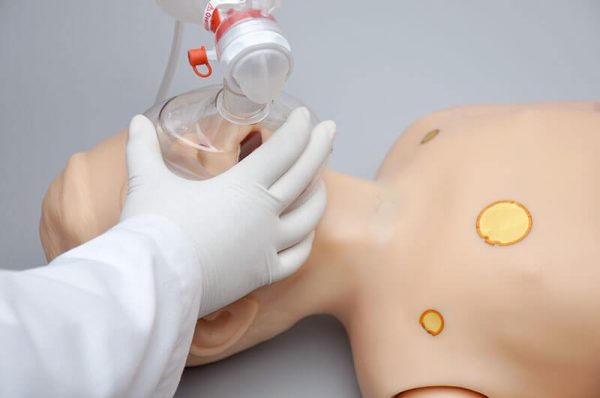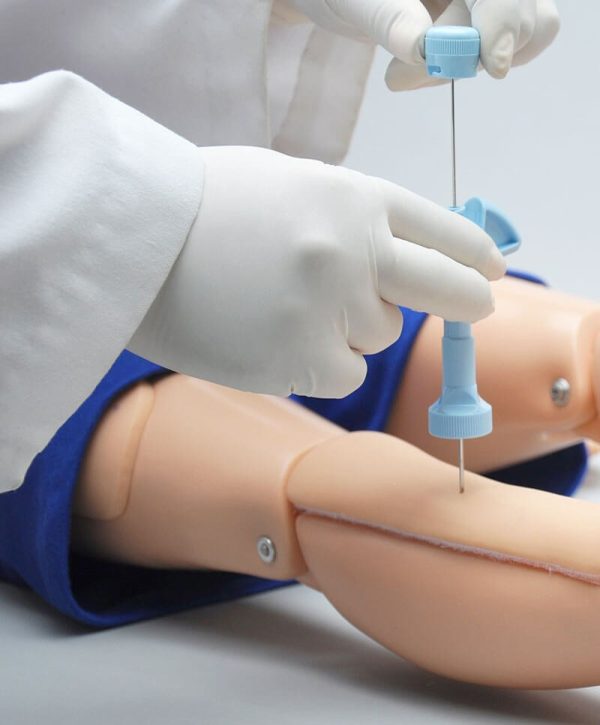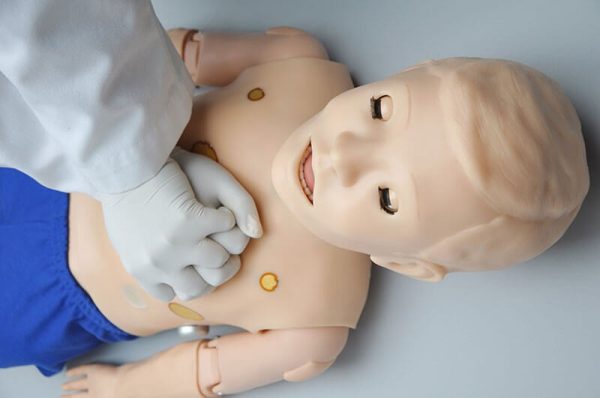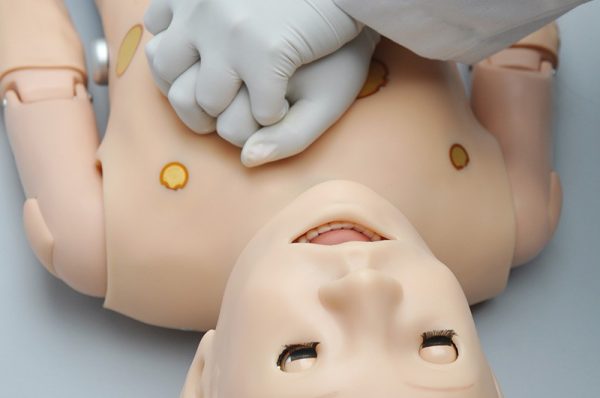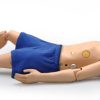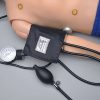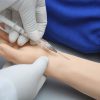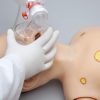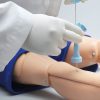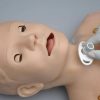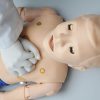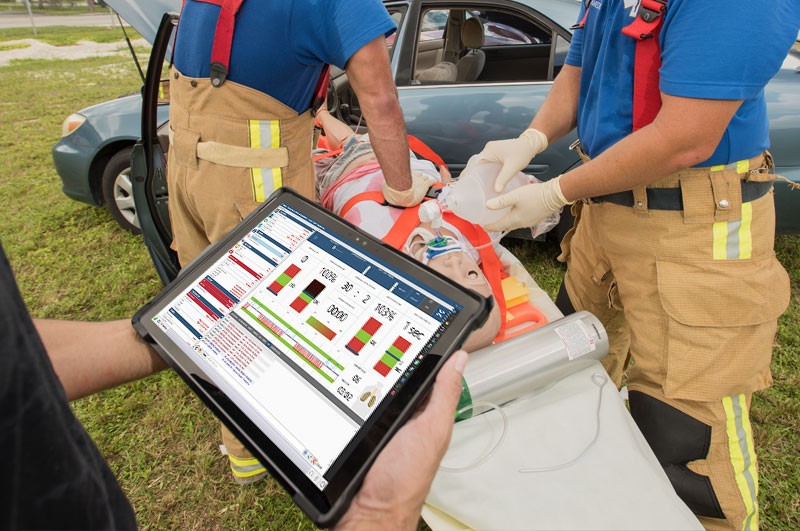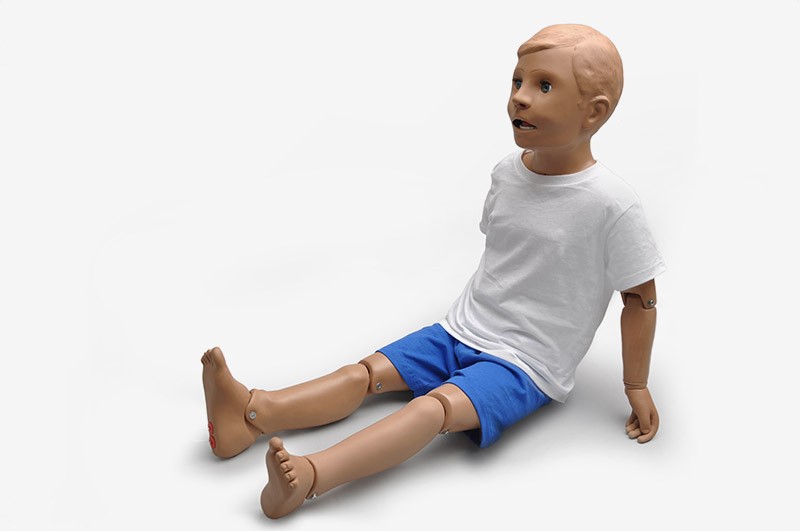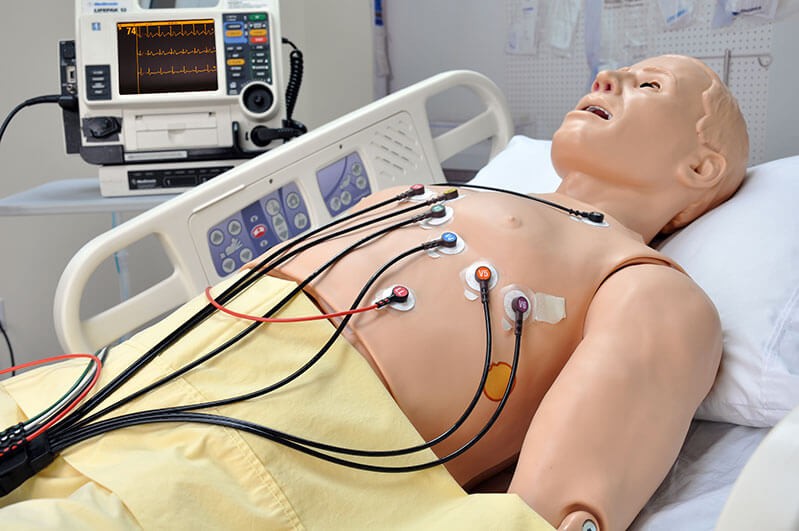Description
Airway
•Oral and nasal intubation
•Use an ET tube or LMA
•Sensors detect depth of intubation
•Unilateral chest rise with right mainstem intubation
•Multiple upper airway sounds synchronized with breathing
New airway feature
•Realistic geometry and larger epiglottis.
•Better visualization of vocal cords as well as easy intubation.
•Lung compliance refined to deliver chest rise when ventilating at 20cm H2O.
•Improved chest wall recoil during CPR.
Breathing
•Control rate and depth of respiration and observe chest rise.
•Ventilation is measured and logged.
•Gastric distention with excess BVM ventilation.
•Select independent left and right lung sounds.
•Chest rise and lung sounds are synchronized with selectable breathing patterns.
•Accommodates assisted ventilation, including BVM and mechanical support
•Unilateral chest rise and multiple breath sounds
Circulation and color change
•Multiple heart sounds, rates and intensities.
•Chest compressions are measured and logged.
•Blood pressure can be taken using a cuff, palpation, or auscultation
•Korotkoff sounds audible between systolic and diastolic pressures
•Color and vital signs respond to hypoxic events and interventions.
•Bilateral carotid, brachial, radial and femoral pulses operate continuously
•Pulse strengths vary with blood pressure and pulses are synchronized with ECG
Active eyes
•Open and close.
•Select blink rate.
•Select pupillary responses to light.
Venous Access
•IV training arms.
•IM sites on shoulders and thighs.
•Intraosseous access at tibia.
Intraosseous infusion
•Intraosseous access at tibia.
Blood pressure
•Blood pressure can be taken using a cuff, palpation, or auscultation.
Defibrillate, Cardiovert and Pace
•Apply real electrodes and AED pads.
•Use real EMS equipment.
•See electrical interventions on your AED or our monitor ECG.
•View ECGs with physiologic variations generated in real-time
•Synchronized with pulses
•Conductive skin regions
CPR
•Improved chest wall recoil during CPR.
Easy to use
•Instructor Control.
•Software control that is powerful and yet intuitive.
•Use our scenarios, modify them or quickly create your own
Hypoxing modeling
•Color and vital signs respond to hypoxic events and interventions.
Gaumard® Scientific – HAL® S3201
File sharing
•Provide students with images such as x-rays, CT scans, lab results, or even multimedia presentations as the scenario progress
Sounds
•Extensive speech library
•Heart sounds include a normal heart as well as splits and murmurs
•Respiratory sounds include normal lungs as well as stridor, bronchial, wheezing, pleural friction and crackles
•Bowel sounds
Simulator
•Physical size is 5 years of age
•Self-contained respiratory and circulatory functions
•Active eyes
•NG and otic exercises
•Tracheotomy opening
•Interchangeable genitalia
•Enema administration
•Two way wireless communication
•Internal rechargeable power
Motion
•Fully responsive even when carried
•Body convulses on command
•Eyes open / close and feature slow or rapid blinking
Log
•Track the actions of up to six care providers using our menu of responses or write a narrative
•Links with Pro+ recording and debriefing system integrating the log with cameras and patient monitors
Control
•Wireless tablet PC with stylus control
•Communication modules are FCC and CE compliant
•Both physiologic modeling and trending
•Comprehensive performance feedback
•Preprogrammed scenarios
•Build your favorite scenarios
